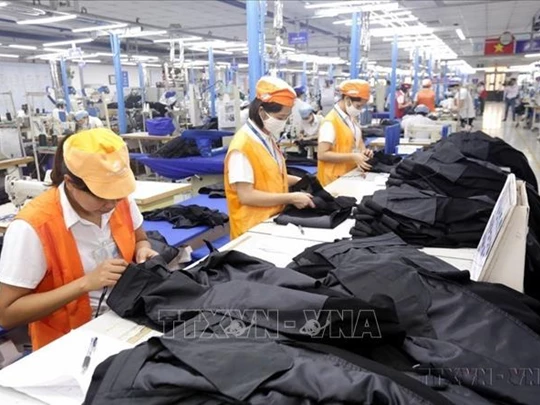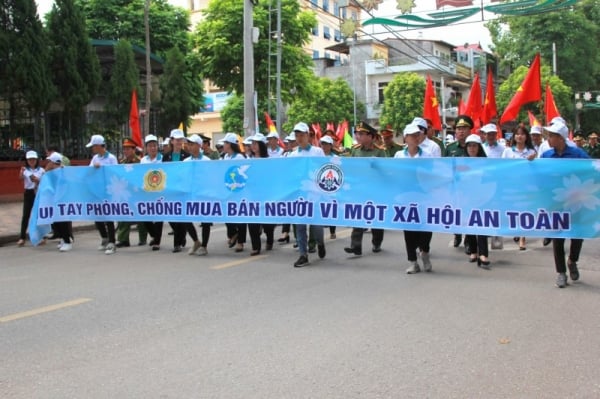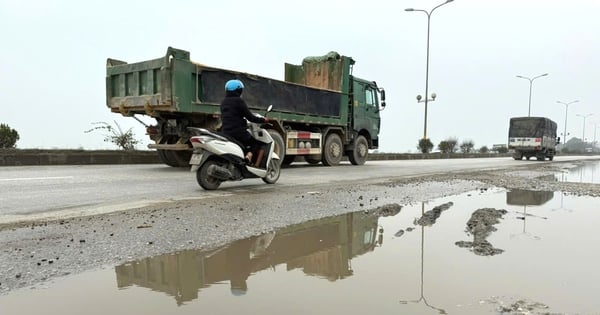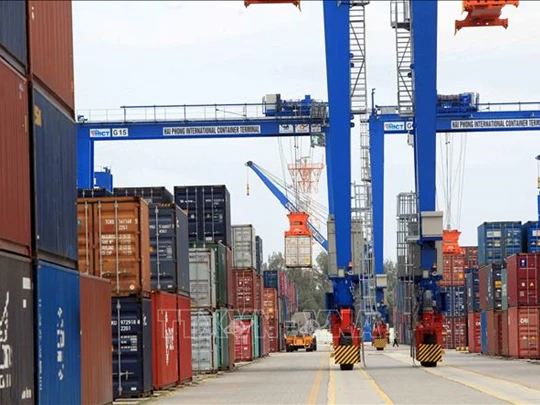Wood exports in 2024 are forecast to continue to face many difficulties due to the lack of clear recovery of orders and product prices. In addition, the conflict in the Red Sea that has lasted since the end of 2023 has forced shipping lines to change and extend their schedules, causing freight rates to the US and European countries to increase, which is a major obstacle to export activities. Enterprises are making efforts to restructure production and markets, reduce costs, and diversify markets to stabilize production.
 Operating wood pellet production line at Van Lang Yufukuya Co., Ltd. (Nghi Son Economic Zone).
Operating wood pellet production line at Van Lang Yufukuya Co., Ltd. (Nghi Son Economic Zone).
Wood energy pellets are considered a green fuel product, prioritized by many countries. Realizing the market's consumption potential and the advantages of raw material areas in Thanh Hoa and neighboring provinces, since the beginning of 2022, Van Lang Yufukuya Co., Ltd. (Nghi Son Economic Zone) has invested an additional 50 billion VND to install and renovate the entire production line and machinery with 6 press heads with modern technology, capacity up to 150,000 tons of wood energy pellets/year. However, global economic inflation has caused a sharp decrease in demand for this product since the end of 2022 until now.
Mr. Lang Van In, Chairman of the Board of Directors of Van Lang Yufukuya Co., Ltd., said: “Not only has output decreased sharply, but the selling prices of products have also decreased sharply. To stabilize sustainable output, we are restructuring the export market towards prioritizing exports to Japan due to higher unit prices than other markets. Typically, currently, the export price of wood pellets to Japan is about 160 USD/ton; while the export price to Korea is 78 USD/ton. We are completing procedures for standardizing input material areas to sign long-term contracts with Japan in large quantities. In the long term, the enterprise will coordinate with people in the raw material areas to plan and build raw material areas for planted forest wood with sustainable certifications such as FSC, PTFC. This not only benefits forest growers when they can purchase wood at high and stable prices, but also helps the enterprise meet the output and strict standards of demanding markets.”
For enterprises exporting plywood and wood chips to Europe and the EU, from the beginning of 2024, the US anti-dumping investigation policy on plywood products has been relaxed, but freight rates have increased 2-3 times, making import partners continue to be cautious, especially for CIF imports, meaning the seller pays the freight.
Mr. Nguyen Cong Hung, Director of Truong Son Wood Industry Joint Stock Company (Nhu Xuan), said: “Transportation costs currently account for up to 25% of the total cost of exported goods, so even a slight fluctuation in this cost will strongly affect the market and the revenue and profit factors of enterprises. Therefore, although the investigation policy has been relaxed, the output of goods exported to the US by enterprises is still only about 1/3 compared to the most bustling period in 2021 and 2022.”
Like the wood industry in the country, Thanh Hoa's wood export markets are mainly the US and the EU. If the political conflict in the Red Sea is slow to be resolved, whether selling goods under the CIF form, meaning the seller pays the freight, or FOB - the buyer pays the freight, it will still be disadvantageous for businesses because profits will decrease, the risk of losing customers is high when partners stop buying or find orders in less affected markets. Currently, many Thanh Hoa wood industry businesses are researching and restructuring product lines, restructuring the market, prioritizing countries in Asia such as China, Japan, Korea and entering the Southeast Asian market.
According to the Thanh Hoa Province Timber and Forest Products Association, the province currently has more than 200 enterprises and wood processing facilities, focusing on three areas: plywood and sawn timber production for interior and exterior use; wood chips for paper production and bioenergy pellets. Of which, the paper industry is currently consuming about 60-70%. Faced with the harshness of the market in recent times, many enterprises have also taken many response measures; however, in the long term, research to extend the value chain from only purchasing to self-investing in afforestation, exploiting raw materials associated with diversifying new products in line with market trends should be the priority direction. Along with that, enterprises need to link sustainably with key wood processing facilities, prioritizing the development of refined wood industries such as furniture and plywood for export, thereby increasing the value of the wood industry in Thanh Hoa.
Article and photos: Tung Lam
Source





































Comment (0)